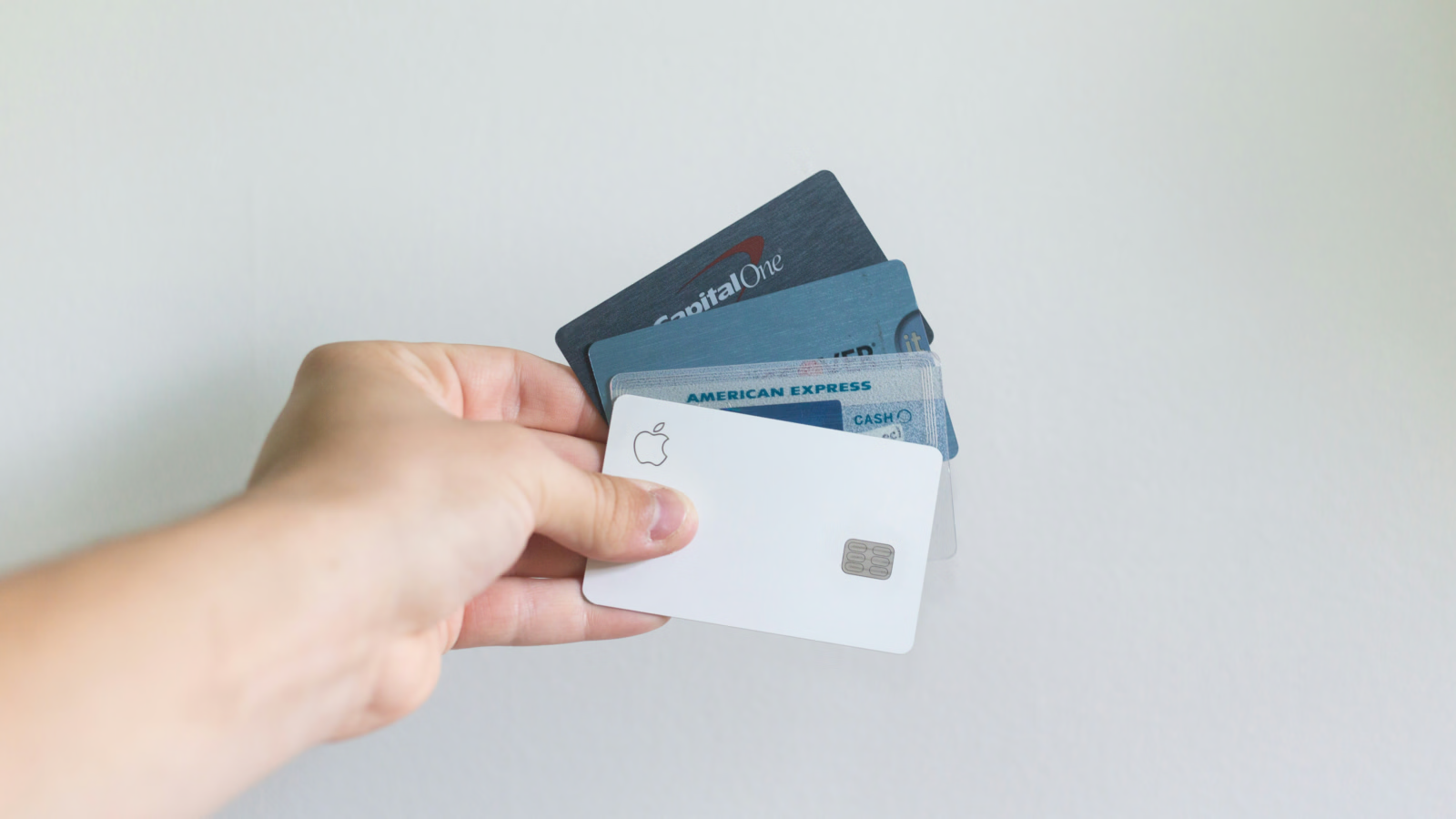Key Points
- Premium credit cards require 5-15 hours annually to maximize benefits through tracking credits, activating offers, and managing redemptions.
- Your personal hourly rate matters when calculating true card value, with time costs potentially offsetting hundreds of dollars in benefits.
- Strategic card selection and automation tools can reduce time investment to 2-4 hours yearly while maintaining 80% of maximum value.
Introduction
You've done the math on your premium credit card. The annual fee is $695, but you can get $1,200 in statement credits, right? Here's what nobody talks about: the hours you'll spend each month logging into portals, activating quarterly bonuses, remembering which card to use where, and tracking expiring credits.
Welcome to the Time Tax, the hidden cost that credit card companies hope you'll ignore. While you're calculating whether your spending justifies the annual fee, you're probably not factoring in the value of your time.
What Is the Time Tax?
The Time Tax represents the cumulative hours you invest managing credit card benefits. It includes tracking statement credits, activating rotating categories, monitoring expiration dates, optimizing which card to use for each purchase, and researching redemption options.
The Real Time Cost of Premium Cards
Monthly Credit Tracking
Many premium cards split their benefits into monthly credits to reduce the likelihood you'll use them all. The Amex Platinum offers monthly credits for Uber and dining services. The Chase Sapphire Reserve provides biannual credits for The Edit bookings.
Each monthly credit requires you to remember it exists, plan purchases around it, and verify the credit posted correctly. If you're managing two or three premium cards with monthly credits, that's 6-9 separate things to remember each month.
Time investment: 30-45 minutes monthly across all cards.
Quarterly Bonus Activation
Cards like the Chase Freedom Flex require quarterly activation of bonus categories. Miss the activation window, and you're leaving money on the table for three months.
Time investment: 15-20 minutes per card, per quarter.
Annual Benefit Coordination
Premium cards pack in benefits that renew on different schedules. Your Priority Pass membership, TSA PreCheck credit, airline fee credits, and hotel status all operate on varying calendars.
Time investment: 2-3 hours annually for planning and coordination.
Redemption Research
Points and miles offer maximum value through transfer partners, but finding sweet spots requires research. You'll compare redemption values across multiple programs, check award availability, and understand transfer ratios.
Time investment: 1-4 hours per major redemption.
Calculating Your Personal Time Tax
Your time has value. If you earn $75,000 annually working 2,000 hours per year, your time is worth $37.50 per hour. If managing your premium cards takes 10 hours yearly, that's $375 of your time.
Suddenly, that $200 in net benefits after subtracting the annual fee looks less impressive. Factor in your time cost, and you might be break-even or even losing money.
Here's the calculation:
- Divide annual income by 2,000 to get your hourly rate
- Track time spent on card management for one month and multiply by 12
- Multiply your hourly rate by annual hours spent
- Subtract this time cost from your calculated card benefits
If the final number is negative or minimal, the card isn't delivering the value you thought.
The Cards With The Highest Time Tax
American Express Platinum ($895 annual fee)
The Amex Platinum theoretically offers over $3,500 in annual benefits, but extracting full value requires managing monthly Uber credits, monthly dining credits, biannual hotel credits, Clear membership, Walmart+ subscription, and various other credits with different merchants and requirements.
Estimated annual time investment: 12-15 hours.
Chase Sapphire Reserve ($795 annual fee)
The Chase Sapphire Reserve includes biannual Edit credits, monthly DoorDash credits, annual travel credits that apply automatically but require verification, and Priority Pass Select with multiple lounge networks to navigate. Learn more about maximizing Chase Sapphire travel benefits.
Estimated annual time investment: 8-10 hours.
Capital One Venture X ($395 annual fee)
The Venture X offers better simplicity with automatic anniversary credits and straightforward earning rates. However, the biannual lounge passes and various purchase protections still require some management.
Estimated annual time investment: 4-6 hours.
Cards With The Lowest Time Tax
Chase Sapphire Preferred ($95 annual fee)
The Chase Sapphire Preferred keeps things simple with straightforward earning rates, an annual $50 hotel credit that's easy to use, and minimal ongoing requirements. The transfer partners remain available when you want them, but there's no pressure to constantly optimize.
You can literally use this card for travel and dining all year, transfer points when you need them, and that's it. No monthly credits to remember, no quarterly activations, no complex benefit calendars. Is the Chase Sapphire Preferred worth it? For many people, the low time commitment makes it a clear yes.
Estimated annual time investment: 2-3 hours.
Citi Double Cash Card ($0 annual fee)
The ultimate low-maintenance card. Earn 2% cash back on everything with no categories to track, no credits to remember, and no activation required.
Estimated annual time investment: 30 minutes annually.
Bank of America Premium Rewards ($95 annual fee)
Straightforward earning structure with an annual travel credit and airline incidental credit. The Preferred Rewards program can boost earnings, but once enrolled, it runs automatically.
Estimated annual time investment: 2-3 hours.
Strategies to Minimize Your Time Tax
Limit Your Card Portfolio
Every additional card multiplies your management burden. Three well-chosen cards can deliver 90% of the value of six cards while requiring far less attention. If you're considering business credit cards, factor in the additional time investment.
Focus on cards with complementary benefits rather than overlapping perks. If your primary card offers Priority Pass, don't get a second card just for the same access.
Automate What You Can
Calendar reminders help, but automation tools work better. CardPointers and MaxRewards track your benefits, remind you about expiring credits, and tell you which card to use for each purchase.
Set up automatic payments for subscription services that trigger monthly credits. Enroll once in programs like Clear or DashPass that your cards reimburse, then forget about them until renewal.
Focus on High-Value, Low-Effort Benefits
Not all benefits deserve your attention. The annual $300 travel credit on the Chase Sapphire Reserve applies automatically to qualifying purchases. That's high value with zero effort. Monthly $10 credits that require specific merchant spending often aren't worth the mental energy.
Prioritize benefits that provide substantial value with minimal ongoing management. A Priority Pass membership you use twice a year delivers $70 in value for near-zero time investment.
Accept You Won't Maximize Everything
Give yourself permission to not extract every last dollar of value. If you use 80% of your card benefits with 50% of the time investment, you're winning.
The goal isn't to maximize card benefits. The goal is to maximize the difference between card value and total cost including your time. Sometimes that means leaving money on the table.
When Premium Cards Make Sense Despite The Time Tax
Premium cards aren't always bad deals, even with the Time Tax considered.
If you spend considerable time already researching travel, the incremental time managing premium card benefits is minimal. You're already optimizing flights and hotels, so optimizing points redemptions fits naturally.
If your work requires frequent travel that you book personally, the automatic benefits of premium cards deliver value with limited additional effort. Priority Pass access, travel credits, and trip protections activate organically through your normal travel patterns.
If you genuinely enjoy the optimization game, the Time Tax might not feel like a cost at all. For some people, researching redemption sweet spots and maximizing benefits is entertaining rather than burdensome.
If your income is high enough that your hourly rate makes most Time Tax calculations irrelevant, the math works differently. Someone earning $500,000 annually has a $250 hourly rate, but they can often justify the time investment as valuable financial education.
The Bottom Line
Credit card companies design benefits to look valuable on paper while remaining challenging to fully extract. They're betting most cardholders won't dedicate the necessary time, or will undervalue their own time in the equation.
When you see a premium card advertising $2,000 in annual benefits against a $695 annual fee, remember you're not just paying the fee. You're also paying in time, attention, and mental energy.
The right approach depends on your income, how you value your free time, and whether you genuinely enjoy credit card optimization. Do the math. Include your time. Then decide if the card is truly worth it.
For most people, the Chase Sapphire Preferred offers the best balance between value and time investment. But if you're someone who travels frequently and will naturally use premium benefits, the Chase Sapphire Reserve or Amex Platinum might justify the time commitment.
This article contains affiliate links. If you apply through our links, we may earn a commission at no cost to you, which helps us continue sharing points and miles strategies with the community.















